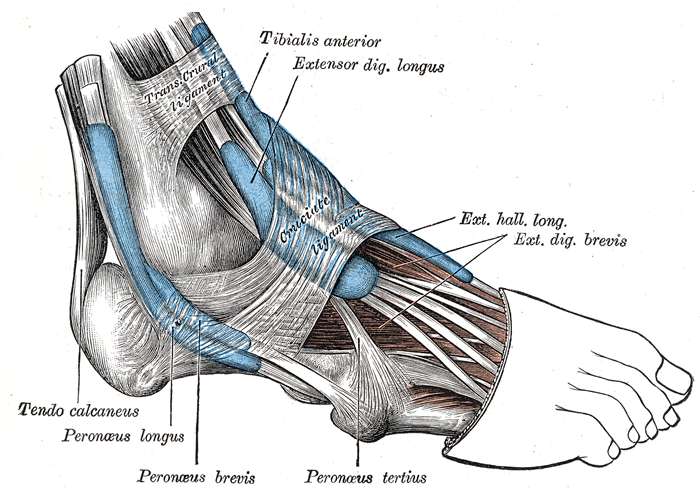 One of the most common injuries is probably ankle sprain. Some 25,000 people sprain their ankles every day by stepping on an uneven surface.
One of the most common injuries is probably ankle sprain. Some 25,000 people sprain their ankles every day by stepping on an uneven surface.
The moment when you lose your balance is a bit odd, you feel a sharp pain but then the pain fades quickly and you can go on your way. Unfortunately, not all sprains are benign. Some are pretty severe, demonstrated through swelling and pain so high that it hurts to even stand on that ankle. You might have felt a “pop” when the injury happened in case the sprain is severe.
What exactly a sprained ankle means?
This injury means one or more ligaments on the outer side of your ankle were stretched or torn.
A sprained ankle means one or more ligaments on the outer side of your ankle were stretched or torn. You could have long-term problems if a sprain is not treated properly.
There are two types of sprain:
1) Inward sprain (inversion sprain) – the ankle is rolled either inward. This is the most common type of sprain and it causes the pain along the outer side of the ankle.
2) Outward sprain (eversion sprain) – represent a more serious injury to the tendons or to the ligaments that support the arch. The pain is felt along the inner side of the ankle and should always be evaluated by a doctor.
Without an x-ray, a fracture (broken bone) can be difficult to differentiate from a sprain. You should seek medical treatment from a doctor (MD or DO) if you are unable to bear weight after this type of injury, or if there is significant swelling or deformity. 
How do I treat a Sprained Ankle?
Chronic pain and instability may be prevented if you treat your sprained ankle properly. For a Grade I sprain, follow these guidelines:
- Rest your ankle. Don’t walk on it limit weight bearing. If necessary use crutches. You are safe to put some weight on the leg if there is no fracture. What often adds stability while the ligaments are healing and helps control swelling is an ankle brace
- To keep down the swelling, ice The ice should not be put directly on the skin. It is recommended you use a thin piece of cloth between the ice bag and the skin, such as a pillow case. Don’t ice more than 20 minutes
- Compression is helpful in controlling the swelling and supporting your injury
Expect the swelling to go down with a few days as this is usually the case.
For a Grade II sprain, follow your doctor’s instructions.
You are put at risk for permanent ankle instability with a Grade III sprain. To repair the damage, surgery may be needed although this is rarely the case. Competitive athletes tend to have these types of injuries. Your doctor may consider treating you with a short leg cast for severe ankle sprains. You’ll be wearing a cast for two to three weeks. If spraining of the ankle is common for you, you’ll probably need surgical repair to tighten their ligaments.
Rehabilitating your Sprained Ankle
In order for your sprained ankle to heal completely a ligament injury needs rehabilitation. Also, when giving your ankle time to heal you are preventing the possible re-injure. There are three phases of recovery for all ankle sprains, from mild to severe:
- Resting, reducing swelling and protecting of your injured ankle
- Restoring your ankle’s flexibility, strength and range of motion
- Gradually returning to straight-ahead activities
During healing process, you should get all the necessary equipment that will help speed up the healing process. In consultation with your doctor, you will probably need to get ankle and foot support and similar hospital supplies for when you are healing at home.
Your doctor will prescribe proper exercises to help strengthen your muscles and ligaments. These exercise routines will also help with increasing your balance, coordination and flexibility.
In order not to hurt the same ankle again, it’s important to complete the rehabilitation program. Chronic pain followed by arthritis in your ankle and instability is pretty likely in cases where the healing process wasn’t completed. Follow your doctor’s instructions always to get well soon.

